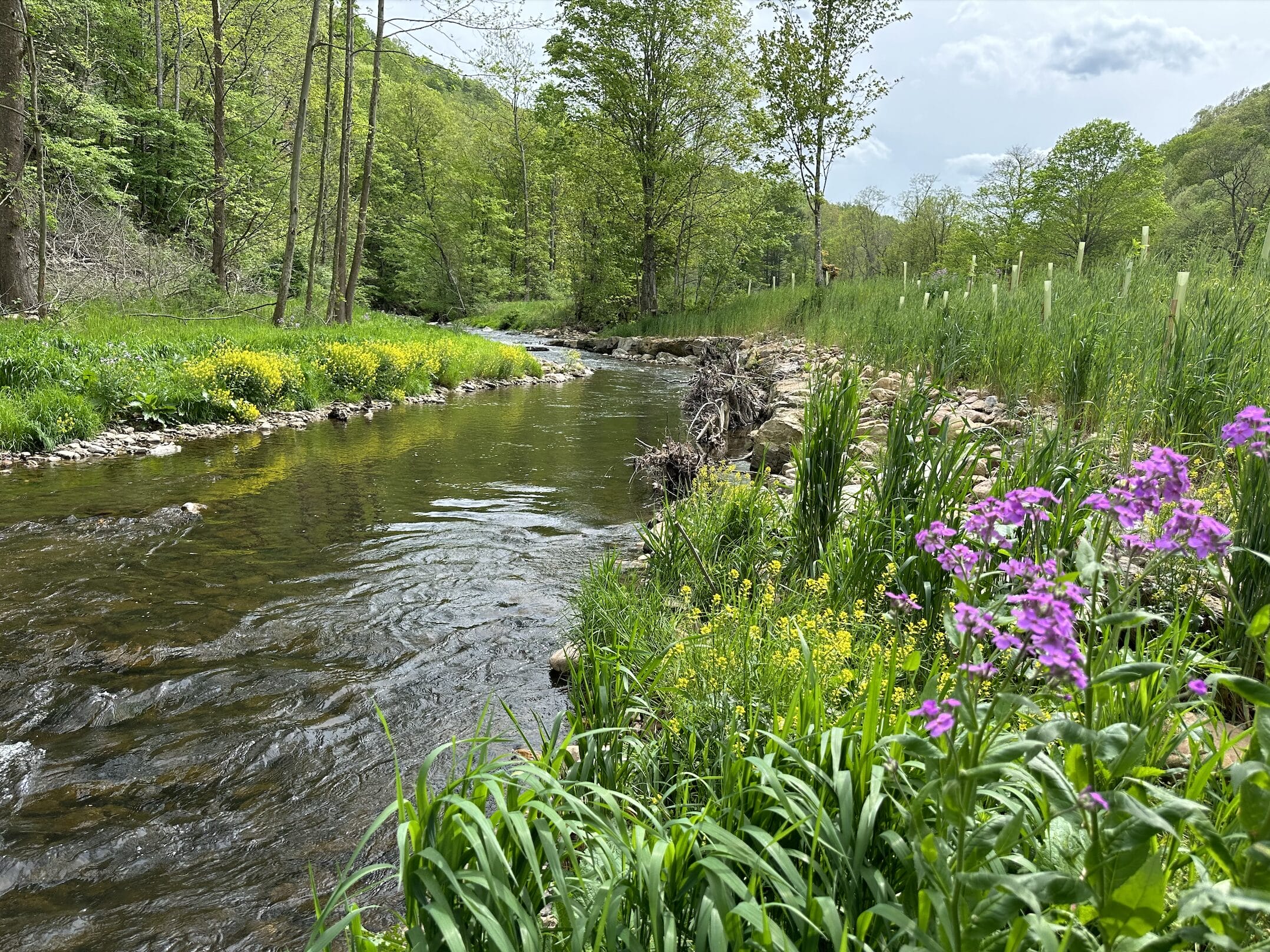Surveying a recent Trout Unlimited dam removal site deep in Virginia’s mountains, Dylan Cooper made sure to not just focus on what wasn’t there anymore, but what remained.
“The dam was a complete fish passage barrier, so it’s great that we removed it,” said Cooper, a TU stream restoration specialist in Virginia. “But it was also a historic structure, so the Forest Service wanted to keep parts of it intact.”
The site on Wilson Creek, miles upstream from where the small stream flows into Douthat Lake State Park, was the first stop on our tour of recent Virginia projects in TU’s upper Shenandoah and James Rivers Priority Waters area.
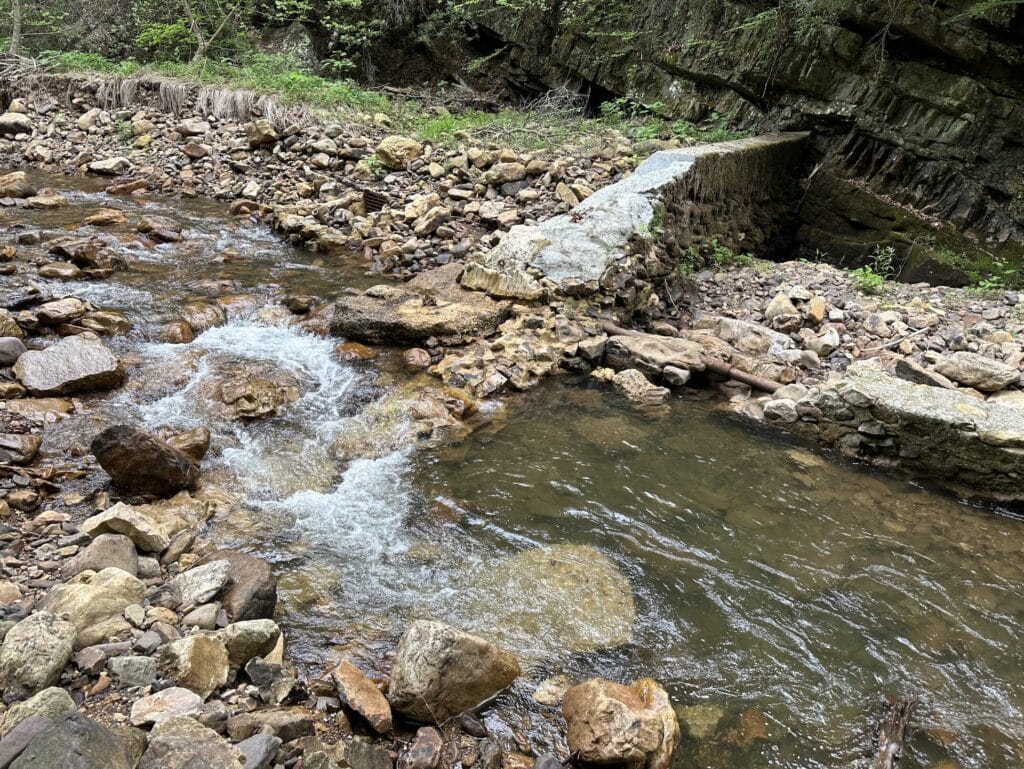
All the projects were unique, exemplifying TU’s flexibility in addressing restoration challenges, for which a one-size-fits-all solution is rarely possible.
Wilson Creek dam removal
Nestled in a deep, shaded canyon in the George Washington and Jefferson National Forest in Bath County, the dam on Wilson Creek was constructed about a century ago as a water supply source for the community of workers helping to build Douthat State Park. After many decades of no use, it was in disrepair.
In cooperation with the U.S. Forest Service and the Virginia Department of Wildlife Resources, the TU-led team tackled the project in 2022, removing part of the structure spanning the streambed while leaving behind stacked stone and concrete along the sides of the streambank for historical purposes.
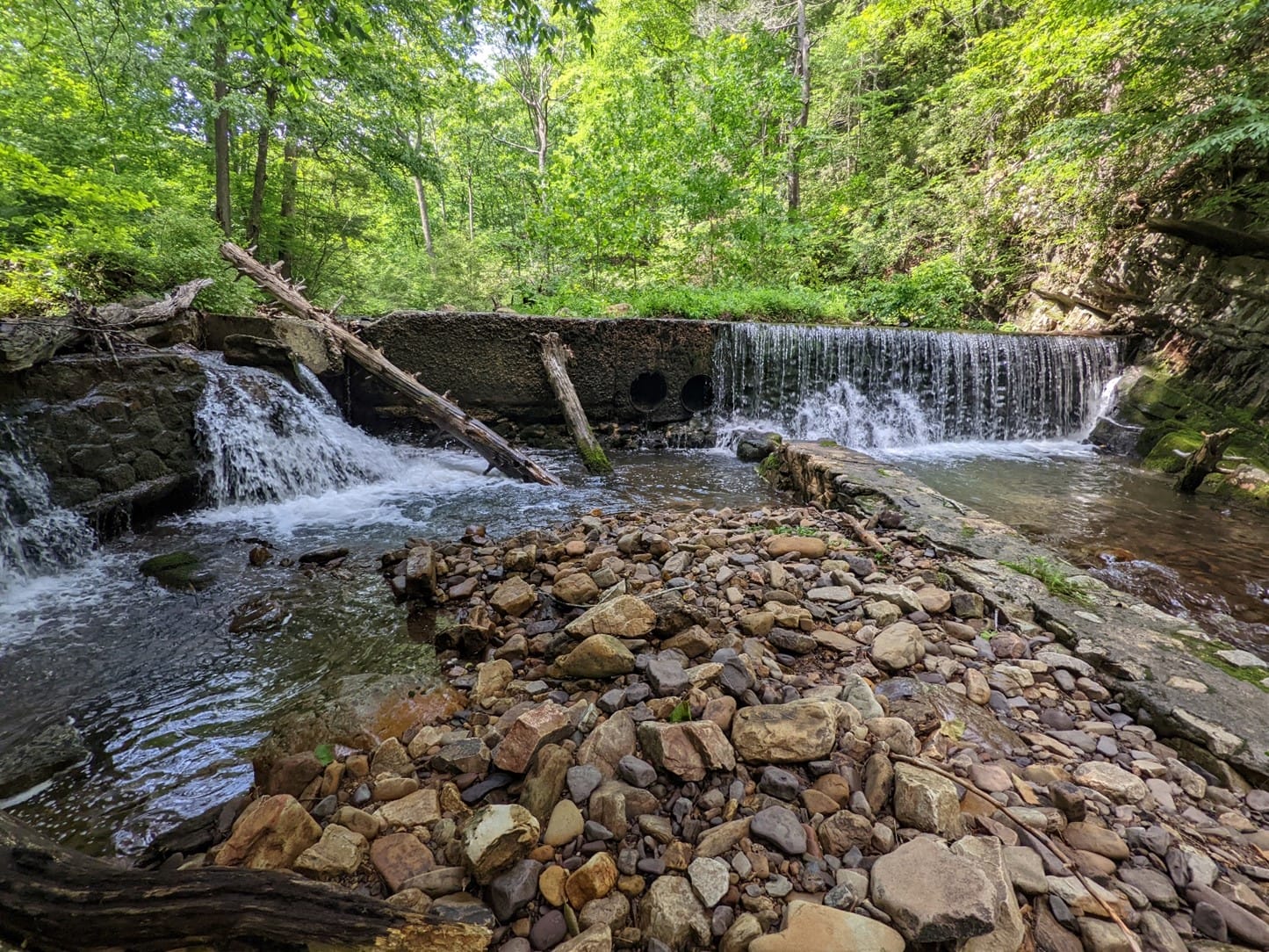
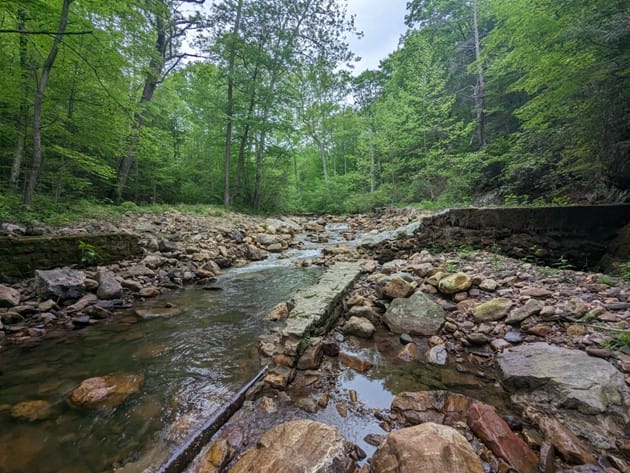
With the barrier removed, native brook trout can now move freely throughout the stretch, allowing fish to move upstream as summer’s increasingly warming temperatures make downstream water temperatures unsuitable for heat-sensitive brookies.
Cooper spent a few minutes presenting a fly with his tenkara rod into newly formed pocket pools both upstream and downstream of the project sites.
“No fish today but I have no doubt they’re in here somewhere and using all this new habitat,” he said. “I could always catch them right below the dam before we removed it, but now they have more freedom to elude me.”
Back Creek streambank stabilization and habitat enhancement
Ninety minutes of driving brought us to the next site on a private parcel in Highland County.
Here, Back Creek flows through a pastoral valley where cattle graze in many streamside fields.
The project, completed with funding support from the local soil and water conservation district, features several sections of stream where large rocks and root wads bolster the bank on an outside bend of the creek.
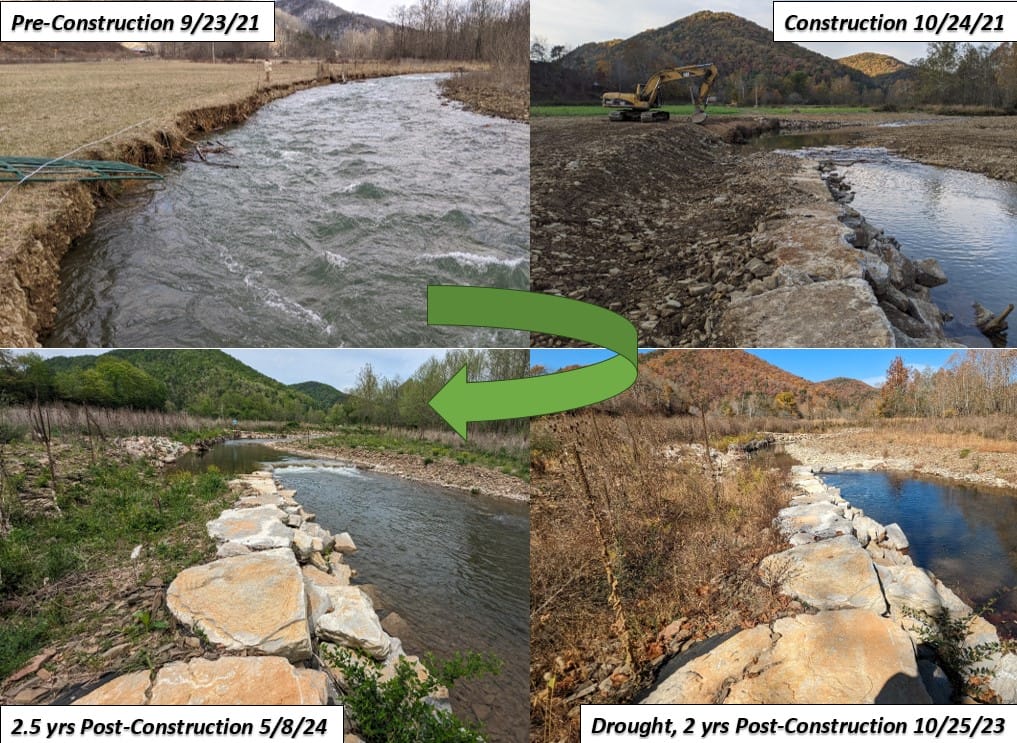
Currently, this section of Back Creek gets too warm during the height of summer to support trout year-round. The hope is that reducing water temperatures by stringing together projects like this will change that and native brook trout from tributaries will begin to use the larger creek.
Second time’s a charm
A few miles upstream we stopped at another project on Back Creek. It looked familiar because it was. I remembered visiting the site shortly after a TU-led crew completed a streambank erosion project on this stretch about 10 years ago.
Unfortunately, part of the project was damaged during an extreme high-water event a couple of years later. The damage would have been more severe had the project not been in place. But, still, it required repair.
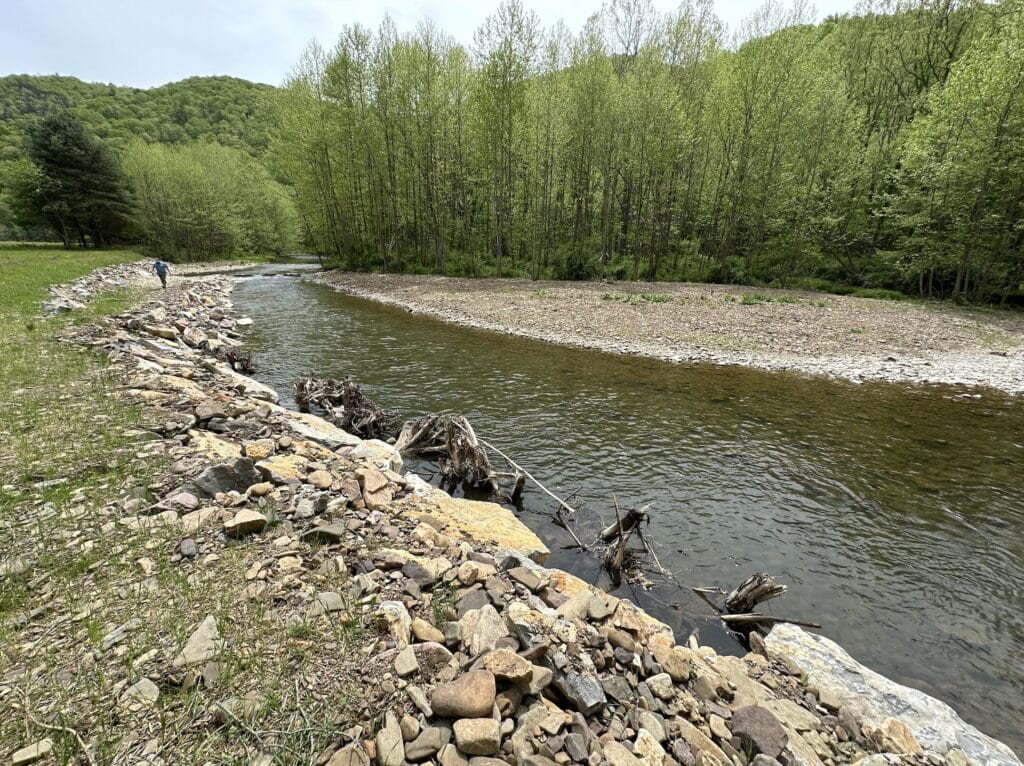
No one likes it when restoration work doesn’t work as designed on the first attempt. But when you’re doing hundreds of these kinds of projects annually, as TU does, sometimes there will be hiccups.
The good news is the repair work is working well. Cooper marveled at the growth of native vegetation and saplings planted in the riparian corridor.
“This looks really good,” he said. “It’s doing its job.”
The 2000 feet of restoration completed across multiple landowners’ properties on Back Creek has sealed gaps to allow for 3.5 miles of continuous forested riparian buffer, vital for keeping the waters of Back Creek cool before they empty into a Dominion Power hydro pump-storage reservoir.
Best practices at work
After a short drive we left the James River watershed and entered the upper reaches of the Potomac River’s headwaters.
Soon we were pulling into a modest-sized property through which West Strait Creek, a small, spring-fed tributary to the South Branch of the Potomac River, runs.
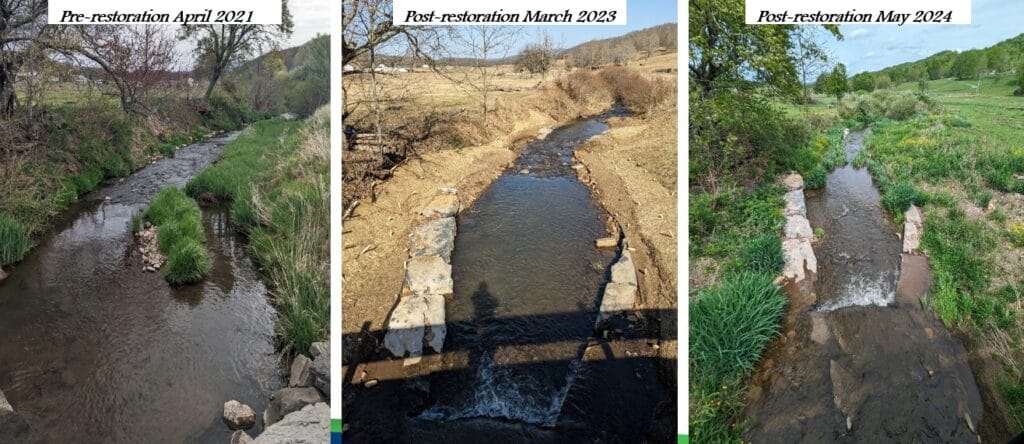
Here, Cooper planned and oversaw a project replacing an undersized culvert with a new bridge, installing in-stream structures to improve riffle-run-pool-glide habitat and planted hundreds of sapling trees in the riparian corridor.
“This looks impressive,” Cooper said of the project, which was supported in part by funding from restoration programs under the Farm Bill.
A couple miles down the watershed we visited another bank-stabilization project on a relatively short section of Strait Creek, with the western streambank strengthened to eliminate erosion that was threatening a home.
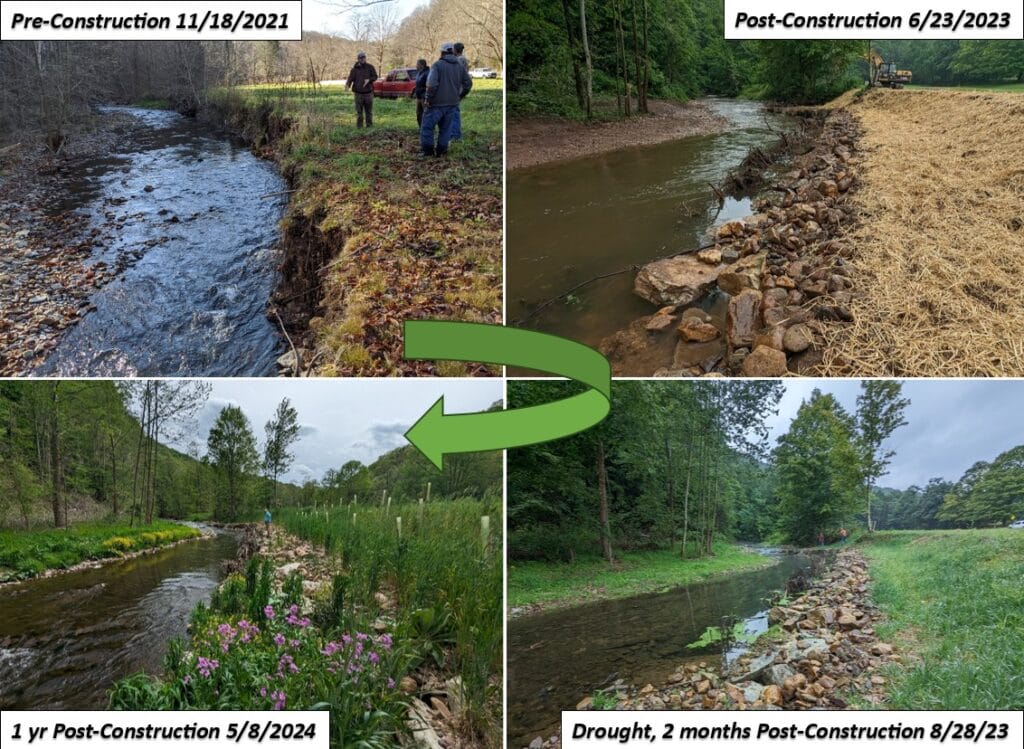
This project, too, was maturing nicely, and this stretch already looked like beautiful trout water. Cooper said it held dozens of native brook trout and holdover stockers during last summer’s drought conditions.
Forest Service investments at work
After another hour-plus on the road we reached our sixth and final stop, a road-stream crossing in the George Washington National Forest about 40 miles west of Harrisonburg, Va.
Here, a small stream called Railroad Hollow passes under a Forest Service road that runs alongside Skidmore Lake, a reservoir that serves as a water source for the City of Harrisonburg.
Until last fall, the culvert that passed the small stream under the road and into the lake was too small to handle high flows, causing significant risk of road damage during flooding events. Also, the downstream end of the pipe was perched high above the plunge pool below, making the culvert an impassable barrier for any aquatic creature, including native brook trout.
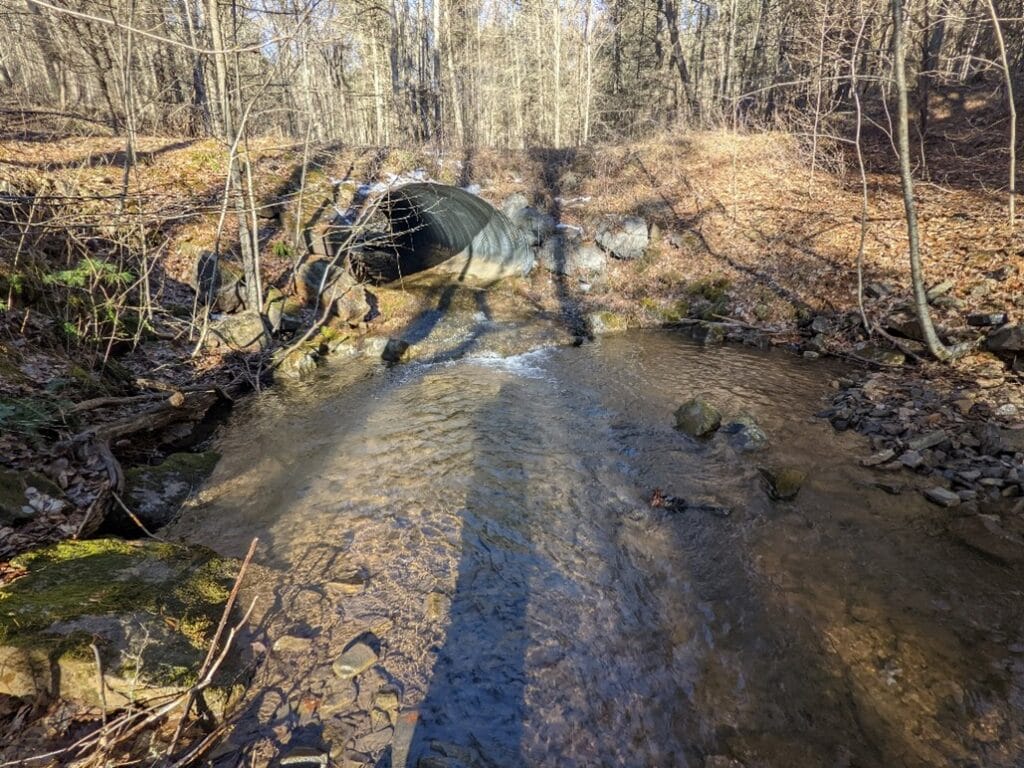
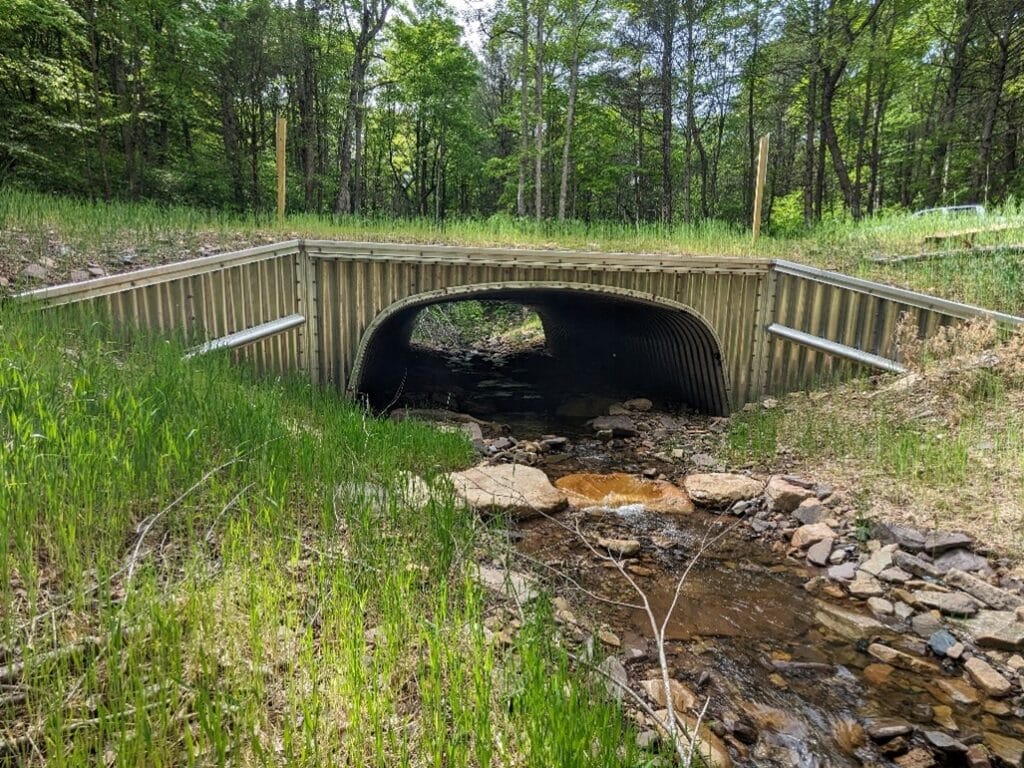
In fact, prior to construction, when TU teams used electrofishing gear to collect brook trout from the pool, they found 45 brookies of all age classes.
The new bottomless box culvert at the crossing, payed for in part with federal infrastructure funding through TU’s Keystone Agreement with the U.S. Forest Service, not only allows for fish passage but will reduce if not totally eliminate the risk of flood damage to the road.
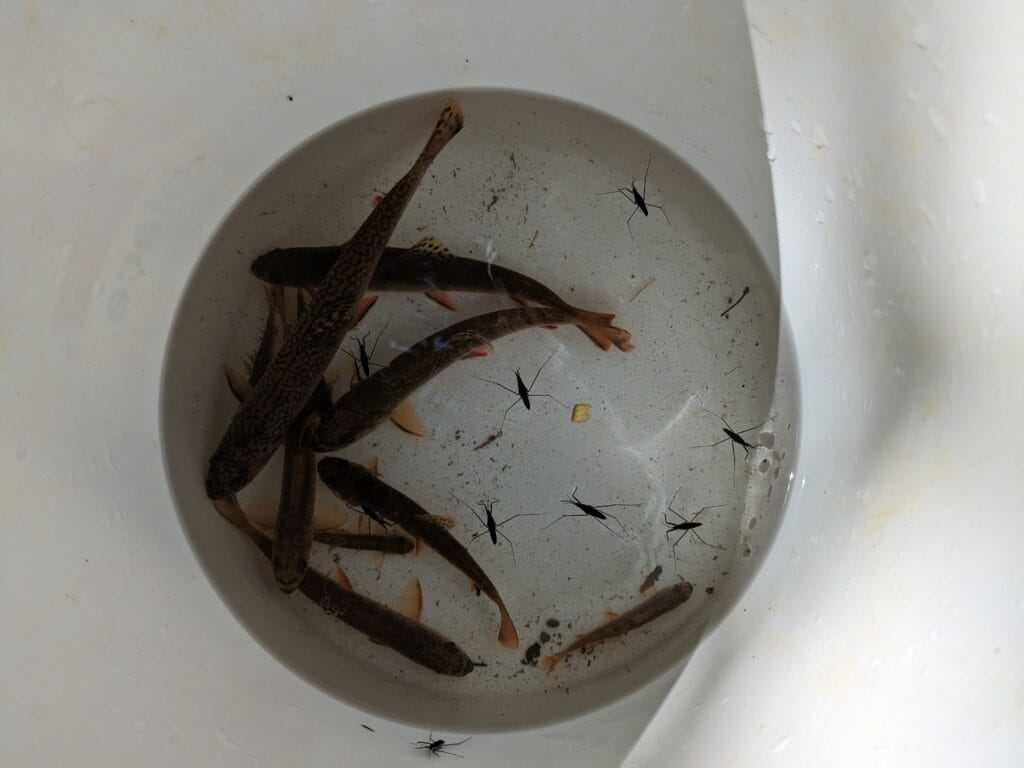
Cooper pointed out additional in-stream structures added during construction, noting that they will further enhance the brookie-holding habitat in the stream.
“The average person driving to the lake might not notice this,” Cooper said. “But they would have noticed if the road had washed out in a flood, and now that won’t happen.”
All shapes and sizes
As I pulled into my driveway that night, I looked at my trip odometer: 305 miles. It had been a long day.
But it had been a great day — one that exemplified TU’s diverse and flexible approach to restoration, both in the projects we’re undertaking and the partners with whom we work along the way. The six sites were just a sampling of the work TU is doing in Virginia.
Those 305 miles had taken me past a large project where we installed fencing and waterers to keep cattle out of streams. I also drove through what we call the North River Complex, where TU has worked with the Forest Service on habitat projects on the headwaters of that stream, and has worked with private landowners on in-stream habitat work on Mossy Creek and Beaver Creek, two valley spring creeks that run through private land but are open to public fishing.
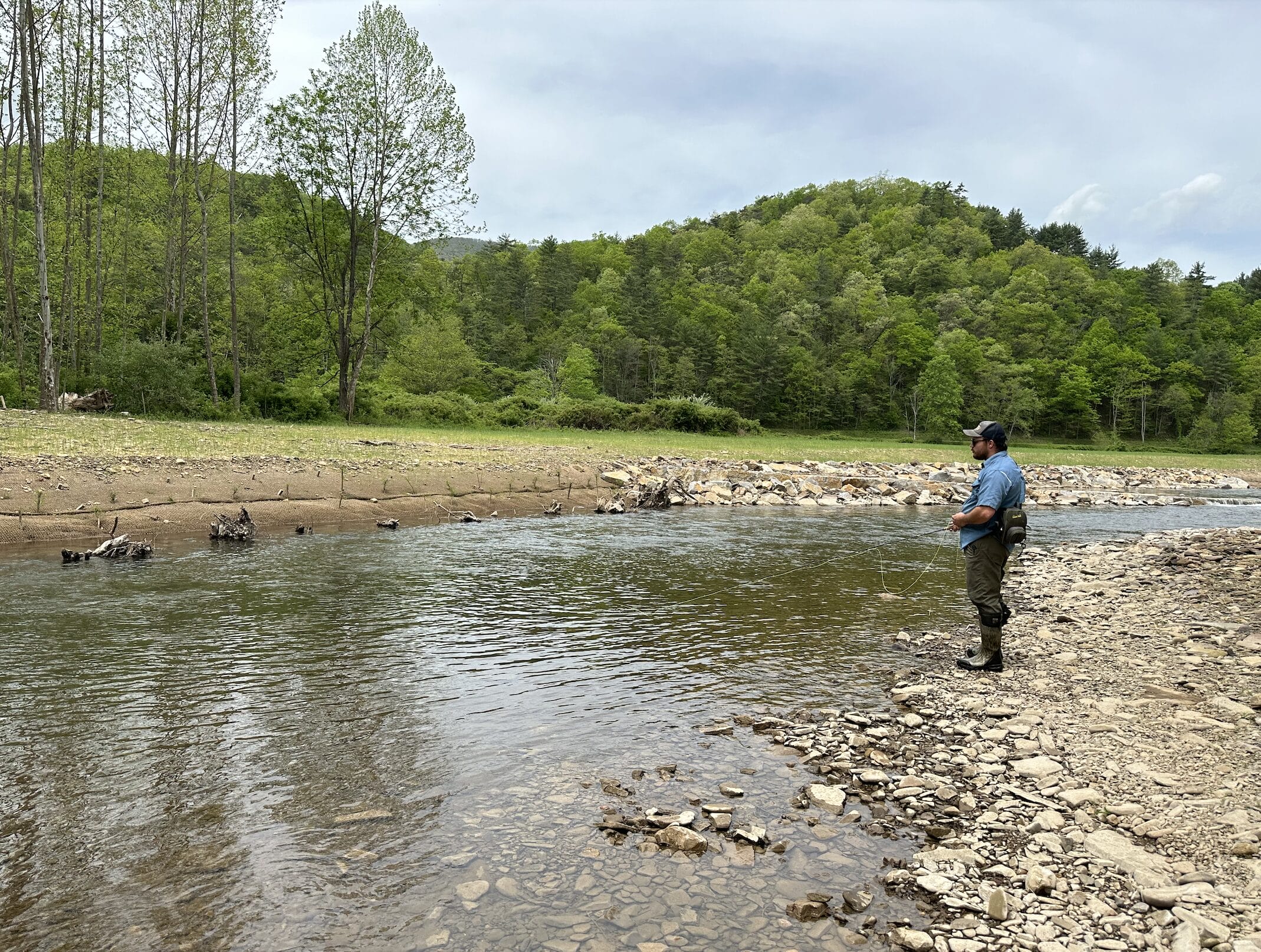
In short, it’s impossible to go anywhere in trout country in Virginia without seeing the positive impact TU and our partners are having on the state’s coldwater resources. The best news? By this time next year there will be many more new projects to tour.



